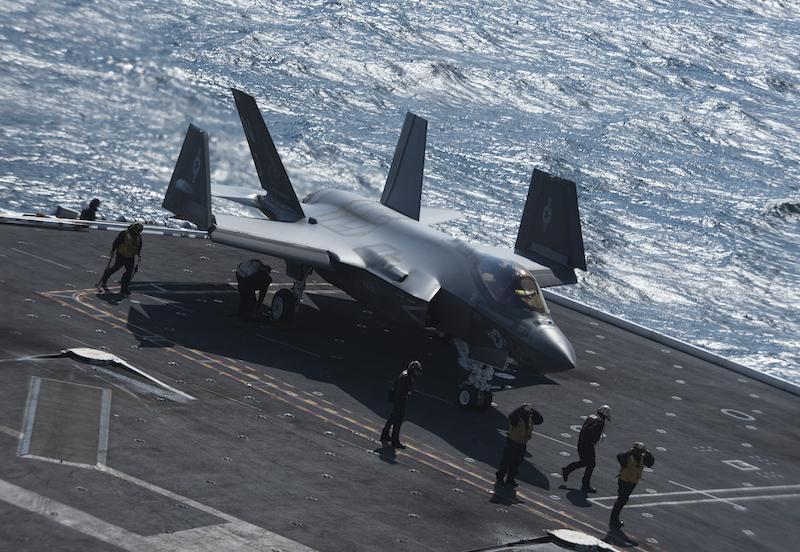
The U.S. Navy plans to buy active expendable BriteCloud decoys from Leonardo to improve the self-protection equipment of the Lockheed Martin F-35 Joint Strike Fighter.
The Navy said July 18 it is looking to place a contract with Leonardo’s UK business for an estimated 1,000-2,000 of the decoys per year. The arrangement would cover a one-year base contract in fiscal 2025, with options for additional purchases in the subsequent two fiscal years. The Navy previously said it was considering buying decoys out through fiscal 2029.
In June, the Navy said it was shopping for such an active decoy system after testing the capability and deciding to introduce it into service. A year ago, the F-35 Joint Program Office acquired a Saab BOL countermeasure dispenser to use in a flight demonstration. The BOL dispenses BriteCloud decoys and passive countermeasure systems.
Leonardo, the Navy said, is the only company that can meet its requirements. The service is looking for delivery of the first decoys within months of formally signing a contract, it has said.
Leonardo offers different form-factors of BriteCloud. The Navy would buy the BriteCloud 218 version that the U.S. Air National Guard has tested.
Leonardo in January disclosed it had introduced upgrades to another version of BriteCloud, the 55-T version designed for use by transport aircraft, to exchange information with the platform’s self-protection system to improve performance in high-threat environments. At the time, the supplier said it would work to add the capability to the “218” design, too.
BriteCloud is an off-board decoy launched from a fighter designed to use its digital radio frequency jammer to attract radar-guided anti-aircraft missiles and divert them from the targeted aircraft. The combination of the flight-stabilized body and active jammer is supposed to fool the missile into engaging the wrong target. The decoy is designed to fit into standard-sized decoy dispensers.
The F-35 already operates with a BAE Systems-provided onboard self-protection system, the ASQ-239, which can include the ALE-70 fiber-optic towed decoy.
The Navy previously disclosed plans to acquire active decoys to replace the Gen-X, an active decoy technology from the 1970s, for other tactical aircraft.





